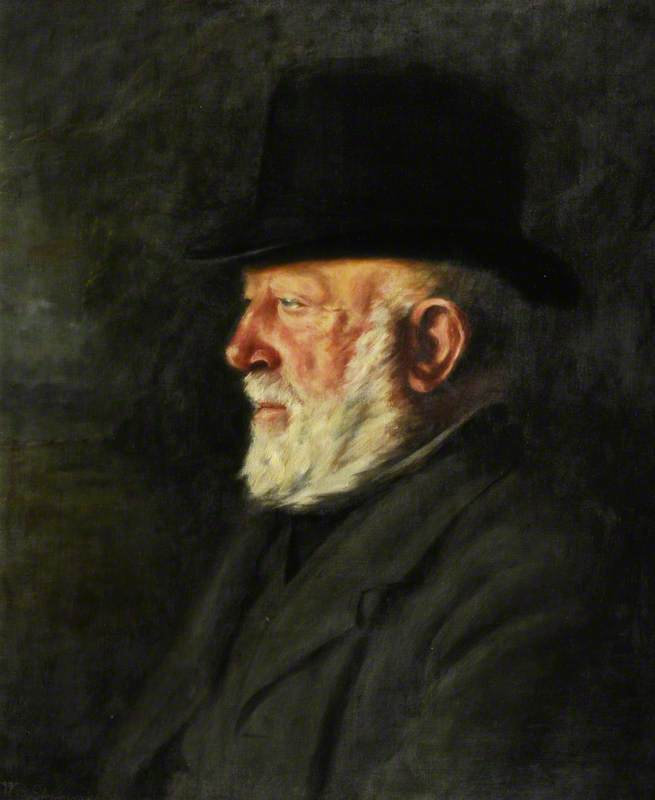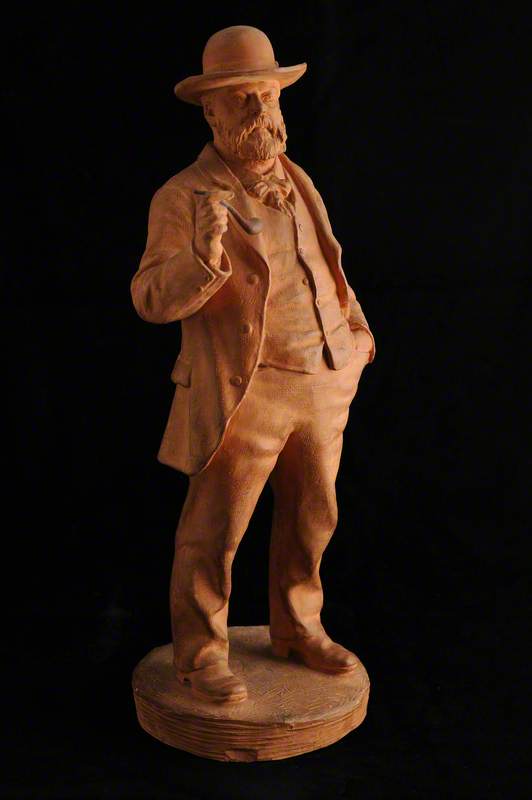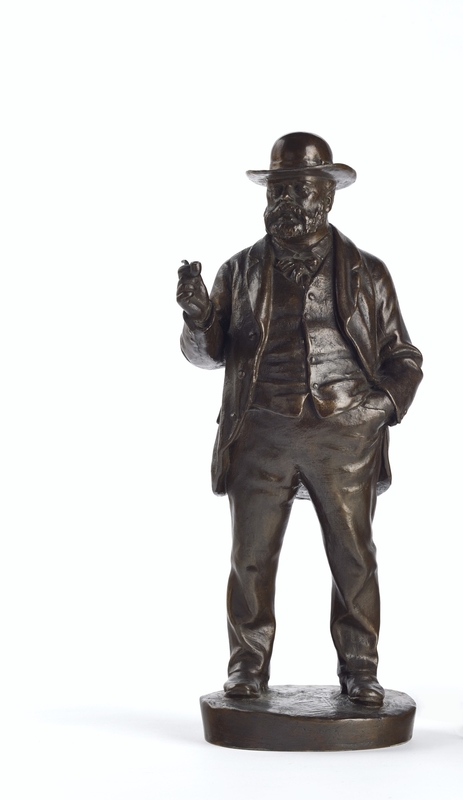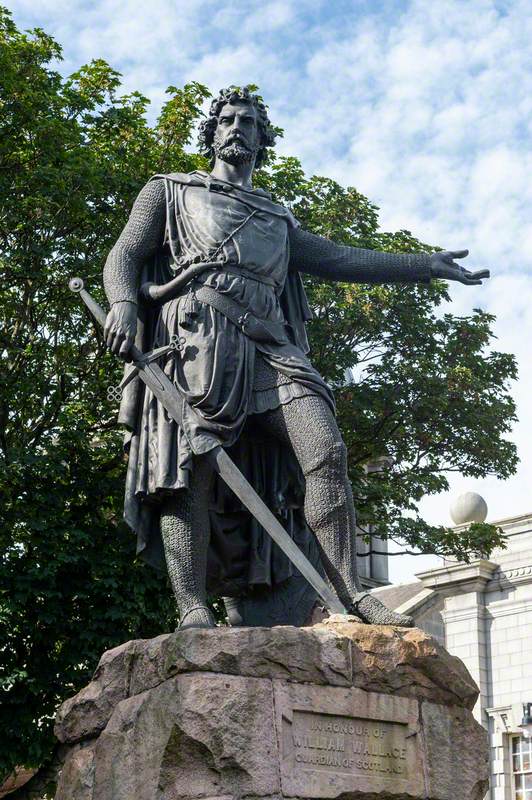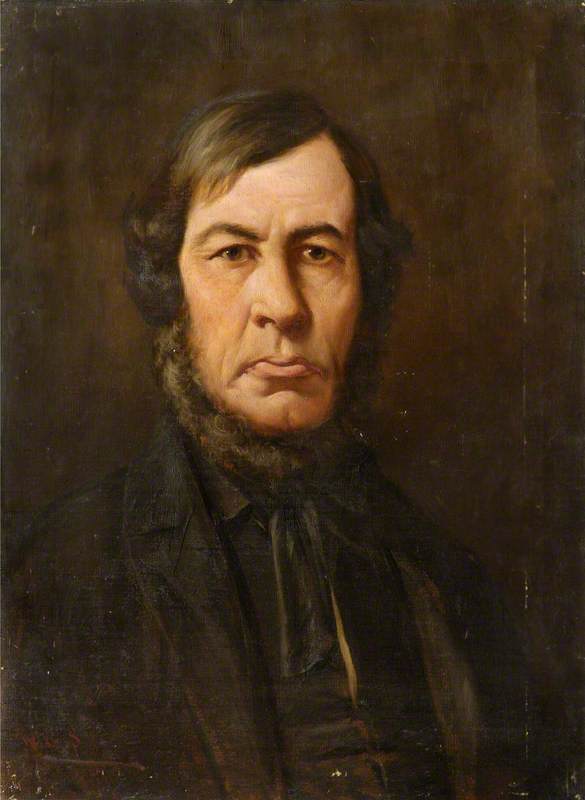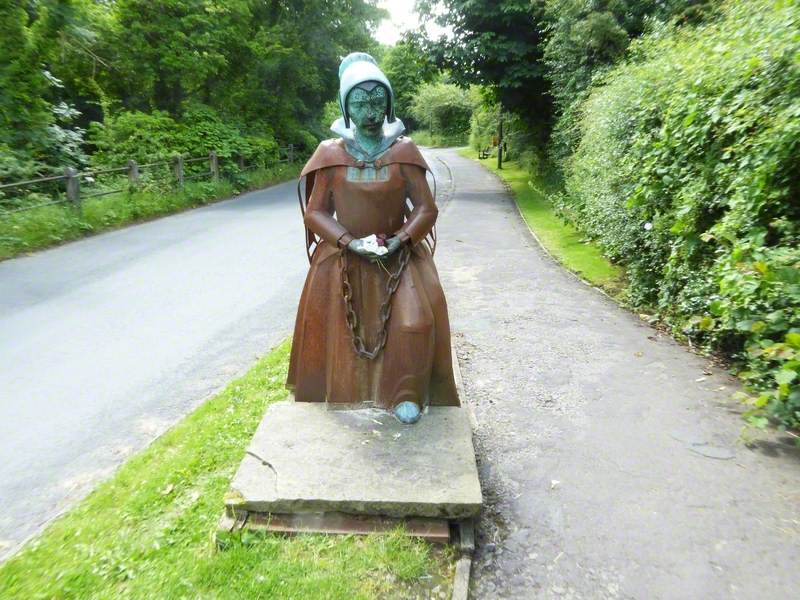
William Grant Stevenson was born in Ratho, Edinburgh, Scotland on 7 March 1849 and was the younger brother of the sculptor David Watson Stevenson (1842-1904). He studied at the Trustees' School at the Royal Institution in Edinburgh, following which he attended the Life Class at the Royal Scottish Academy in Edinburgh where he was awarded gold and silver medals, including the Stuart Prize for a Relief of a Classical Subject in 1869. In c.1878, whilst still a student at the Academy he won the Competition for the Monument to Robert Burns in Kilmarnock. He later also produced statues of Burns for Denver, Colorado (1904, Chicago, Illinois (1906), Frederickton, New Brunswick, Canada (1906); and Milwaukee, Wisconsin (1909). Stevenson's most notable works are his bronze statue of the Scottish patriot William Wallace in Aberdeen (1888); and three figures for the Scott Monument on Princes Street in Edinburgh.
W. G. Stevenson produced several portrait busts, including of the masons of the Grand Lodge of Scotland, and executed a number of statuettes in silver.
He exhibited frequently at the Royal Scottish Academy in Edinburgh from 1868 to 1919. He also exhibited at the Royal Academy in London; Royal Glasgow Institute of the Fine Arts; Walker Art Gallery in Liverpool; and at the Aberdeen Artists' Society. He participated in the International Exhibition in Glasgow in 1901. He was elected an Associate of the The Royal Scottish Academy (ARSA) in 1885; a full member of the Academy (RSA) in 1896; and a member of the Royal Society of British Sculptors in 1906.
In addition to his work as a sculptor W. G. Stevenson also worked as a painter and illustrator. He was the author and illustrator of Puddin': An Edinburgh Story (Edinburgh and London: Oliphant Anderson & Ferrier, 1894) and Wee Johnnie Paterson (Edinburgh and Boston: T.N. Foulis, 1914)
He died in Edinburgh on 6 May 1919.
Text source: Arts + Architecture Profiles from Art History Research net (AHRnet) https://www.arthistoryresearch.net/
